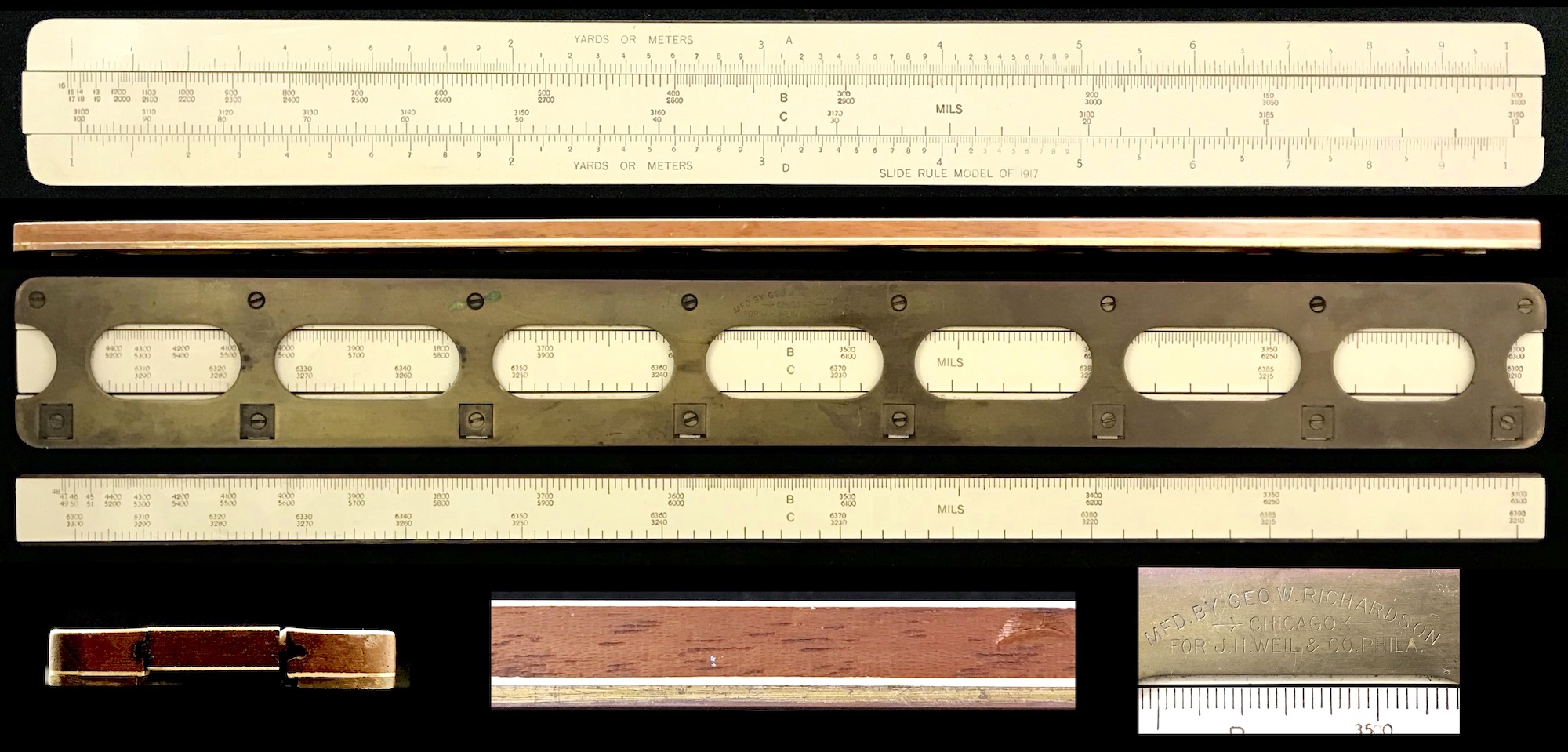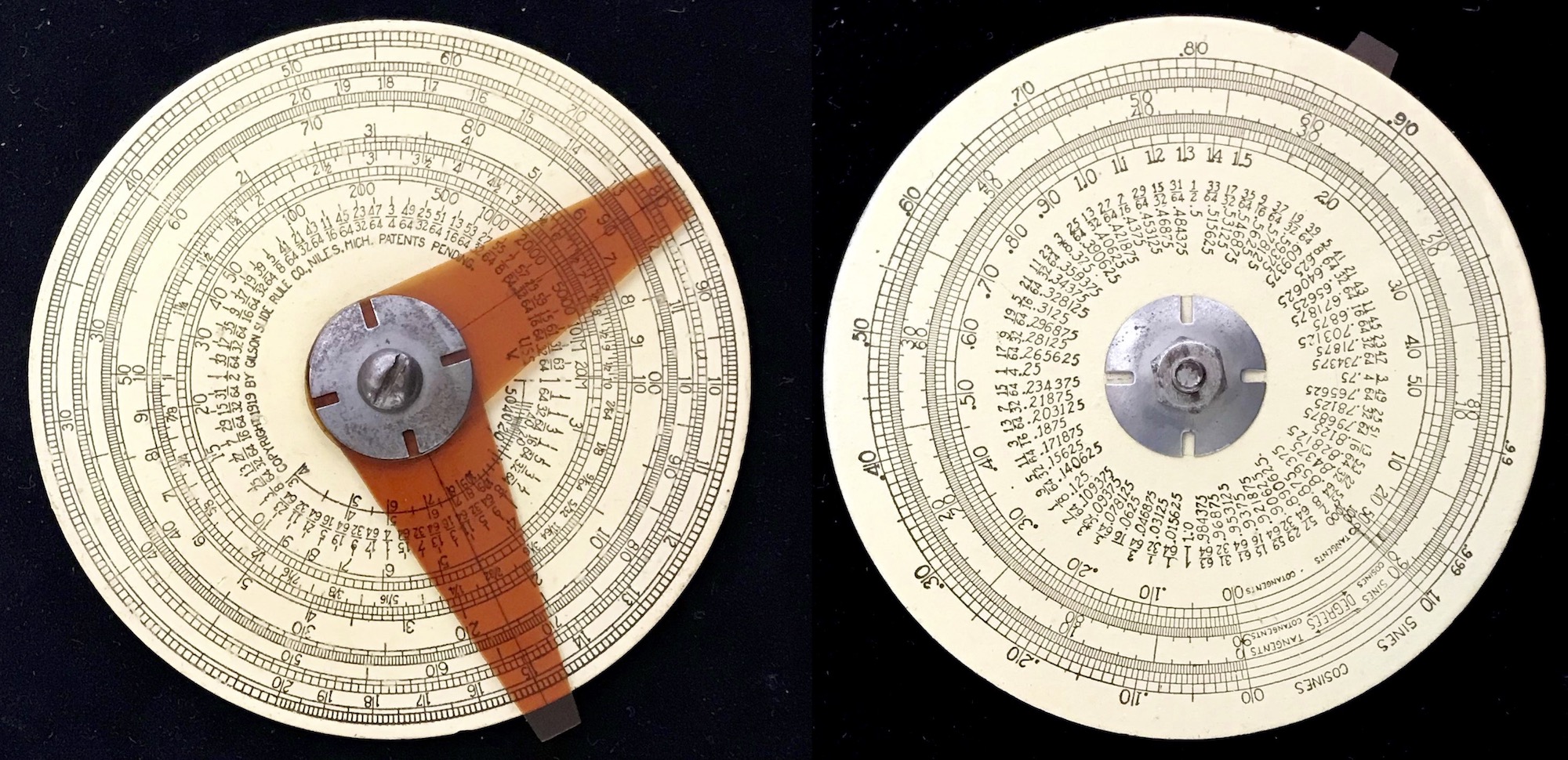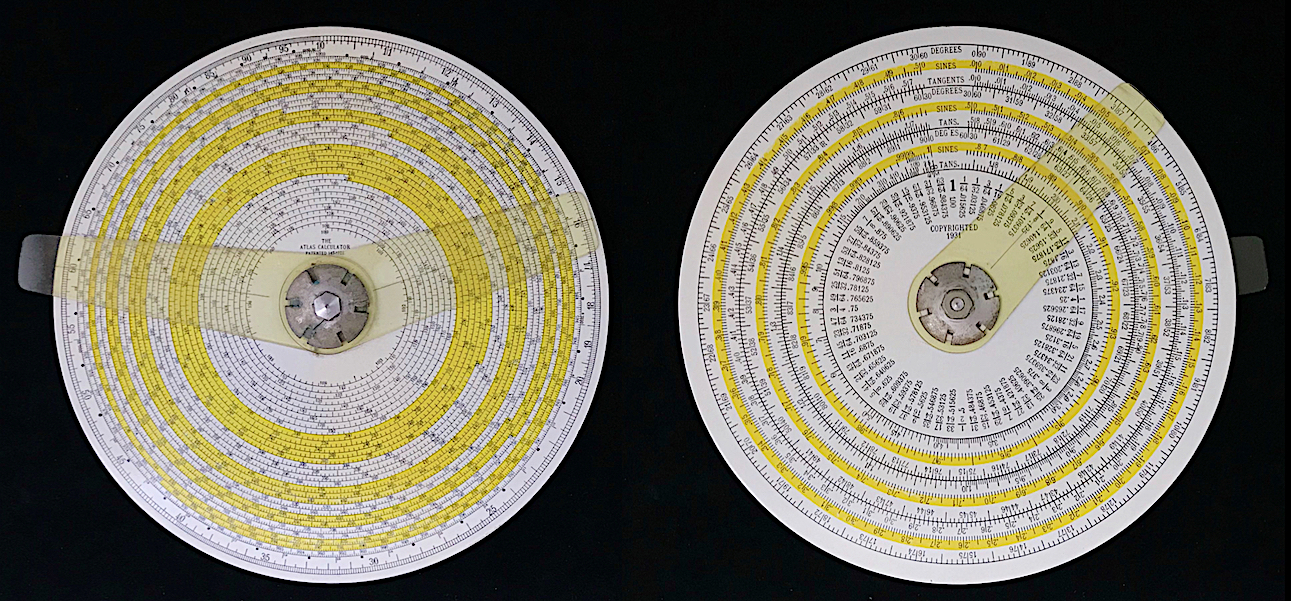5.8 Gilson, Richardson, USA
The slide rule companies of Gilson and Richardson were both formed in the early part of the 20th century, both were family-owned and operated, initially right from their homes, and both produced metal slide rules.
George W. Richardson, of Chicago, Illinois, USA, copyrighted his first slide rule in 1903, using stainless steel to produce less expensive rules with colorful scales and a unique system for Gauge Marks. He operated his initial business out of his home in Chicago and began selling his rules in 1907, advertising them in the magazine Popular Mechanics by 1909. Many Richardson slide rule models were named for significant years in American History: 1776, 1812, and 1865, for instance. In 1917 during the Great War (WWI) Richardson produced a military slide rule for J.H. Weil and Company, named the Slide Rule Model of 1917. This rule was made from mahogany and brass, rather than his standard stainless steel design.
In 1912 Richardson first published his popular book, The Slide Rule Simplified. Over the next several years new editions of the book contained additional material on the newer slide rules. A description of the Slide Rule Model of 1917, written by J.J. Clark, is found in the book’s Sixth Edition in 1918, for instance. Later editions were co-authored with Clark and included advertising for the Richardson line and other slide rules – particularly those by Gilson!
Meanwhile, just a 100 mile drive to the east of Richardson’s home, Claire Gilson founded the Gilson Slide Rule Company in the basement of the Gilson family home in Niles, Michigan, USA in 1915. Gilson produced circular slide rules with double cursors. These rules were first made of wood with paper overlays, but the wood gave way to steel and then to aluminum by 1919. Their Midget and Binary models were popular in many circles, and their Atlas model, with its nearly 400-inch spiral scale, was one of the most accurate slide rules on the market.
Around 1919 Richardson sold his business and retired, continuing to live in Chicago until his death in 1940. While there is no public record to substantiate, there is significant circumstantial evidence that the Richardson business was in fact sold to Gilson.11
The Gilson company moved to Stuart, Florida in 1927, and was sold to a buyer from New Jersey in the early 1960’s. Gilson slide rules were often sold by various companies under their own names, including Frederick Post Co., Eugene Dietzgen Co., and others. As a result the name Gilson often does not appear on many of the Gilson slide rules, though their origin is fairly apparent.






Gilson Midget Type II (left) and Gilson Binary Type I (right).

Total number of Gilson and Richardson slide rules in the collection: 11.
| Maker | Model | Year | Type | Mat | L0 | Note | |
|---|---|---|---|---|---|---|---|
| Richardson | 1776 |
|
1912 | L | ss | 10 | 1776 Simplex; nice condition’ Richardson Rule Works |
| Richardson | Direct Reading (812) |
|
1912 | L | Al | 10 | Nice condition; early rule |
| Richardson | Direct Reading Pocket |
|
1912 | L | ss | 5 | pocket rule; leather pouch in rough condition |
| Richardson | Direct Reading Pocket |
|
1912 | L | ss | 5 | pocket rule; slight warping on end of slide; no cursor |
| Richardson | Pantocrat 812 |
|
1912 | L | ss | 10 | Richardson Rule Works; nice condition though slight warp; SR Simplified c. 1922 |
| Richardson | Model of 1917 | 1917-1918 | L | wd | 17 | WW I military slide rule for ranging calculations; mahogany on brass; described in Richardson’s Slide Rule Simplified, 6th Ed.; made for J.H. Weil & Co., Phila. | |
| Gilson | Midget | 1919 | C | Al | 12 | 99 mm Gilson Midget Type II w/ original case | |
| Gilson | Atlas |
|
1931 | S | Al | 468 | Type II Atlas Calculator |
| Gilson | Midget |
|
1940 | C | Al | 12 | made for Dietzgen; 99 mm Gilson Midget Type VI version I |
| Gilson | Binary | 1941 | C | Al | 26 | Gilson Binary Type I with case | |
| Richardson | GE Analizer |
|
1951 | L | wd | 4 | General Electric Company Quantity Analizer; similar construction to Richardson/J.H.Weil Slide Rule of 1917, apparently re-purposed; slots apparently for cursor on edges; GE logo from c.1951 |
See Michael Konshak, “Richardson and Gilson”, Jour. Oughtred Soc., Vol. 15, No. 1, p. 39 (2006); and, John H. Runnels, “A Smoking Gun: The Gilson-Richardson Connection”, Jour. Oughtred Soc., Vol. 30, No. 1, p. 25 (2021).↩︎